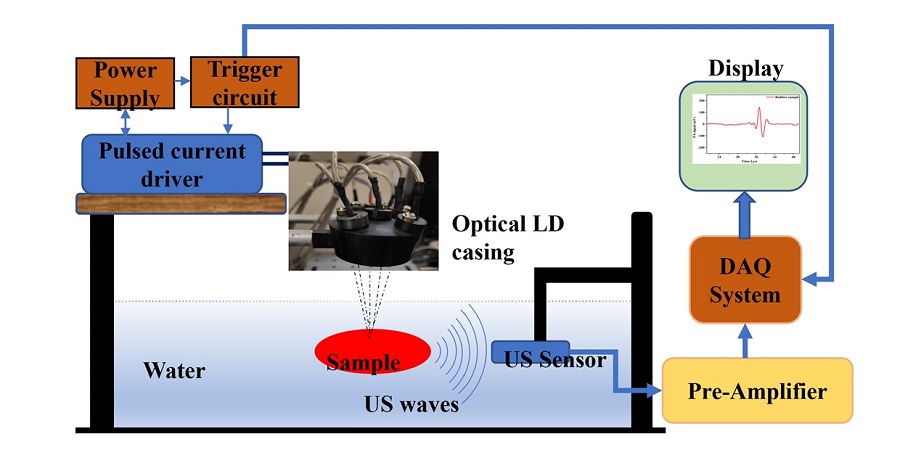Compact Photoacoustic Sensing Instrument Enhances Biomedical Tissue Diagnosis
Posted on 15 Feb 2024
The pursuit of precise and efficient diagnostic methods is a top priority in the constantly evolving field of biomedical sciences. A promising development in this area is the photoacoustic (PA) technique. Over the past decade, PA imaging has gained traction as a practical imaging modality in various clinical settings where it has demonstrated encouraging results. While traditional diagnostic methods are invasive, PA imaging offers a noninvasive alternative for examining biological tissues. However, its broad clinical application has been hampered by the bulkiness and high cost of laser sources. Now, researchers have introduced a groundbreaking, compact, and affordable PA sensing instrument for biomedical tissue diagnosis. Their proof-of-concept study, utilizing cost-effective diode lasers, marks a significant step toward the transition of PA imaging from laboratory research to clinical application.
For the study, researchers from the IIT Indore (Madhya Pradesh, India) focused on the complex nature of breast tissue, specifically fibrocystic changes, which often present diagnostic challenges due to similarities with breast cancer. These changes can cause breast pain and detectable cysts and are frequently found in peritumoral breast parenchyma, complicating diagnoses. Traditional diagnostic methods like ultrasound and mammography sometimes lack the necessary precision, and fine needle aspiration cytology, a common diagnostic tool, often requires additional invasive procedures for confirmation. The PA technique, leveraging laser diodes, generates acoustic waves that provide critical insights into tissue composition and density.

The novel instrument incorporates multiple laser diodes in a compact design, coupled with a custom-built pulsed current supply unit, producing efficient PA excitation with 25 nanosecond pulses at 20 kHz. The researchers were able to distinguish between normal and diseased breast tissues by analyzing the frequency spectra of PA signals. Analyzing the frequency spectra allowed for quantitative tissue assessment. For example, fibrocystic breast disease showed a dominant frequency peak at around 1.60 MHz, suggesting increased tissue density, while normal breast tissue had a lower peak frequency of 0.26 MHz, indicative of its fibrofatty composition.
Histopathological examinations confirmed these observations, aligning spectral responses with tissue characteristics. The experimental setup differentiated tissue types based on quantitative spectral parameters, enhancing diagnostic accuracy and potentially simplifying the sampling process for pathological breast tissues. The compact PA sensing instrument could emerge as a promising tool for clinical practice, offering rapid, reliable, and cost-effective breast disease diagnosis. This breakthrough paves the way for timely interventions and improved patient outcomes, revolutionizing biomedical practices with a cost-effective and rapid tissue diagnosis approach.
Related Links:
IIT Indore














